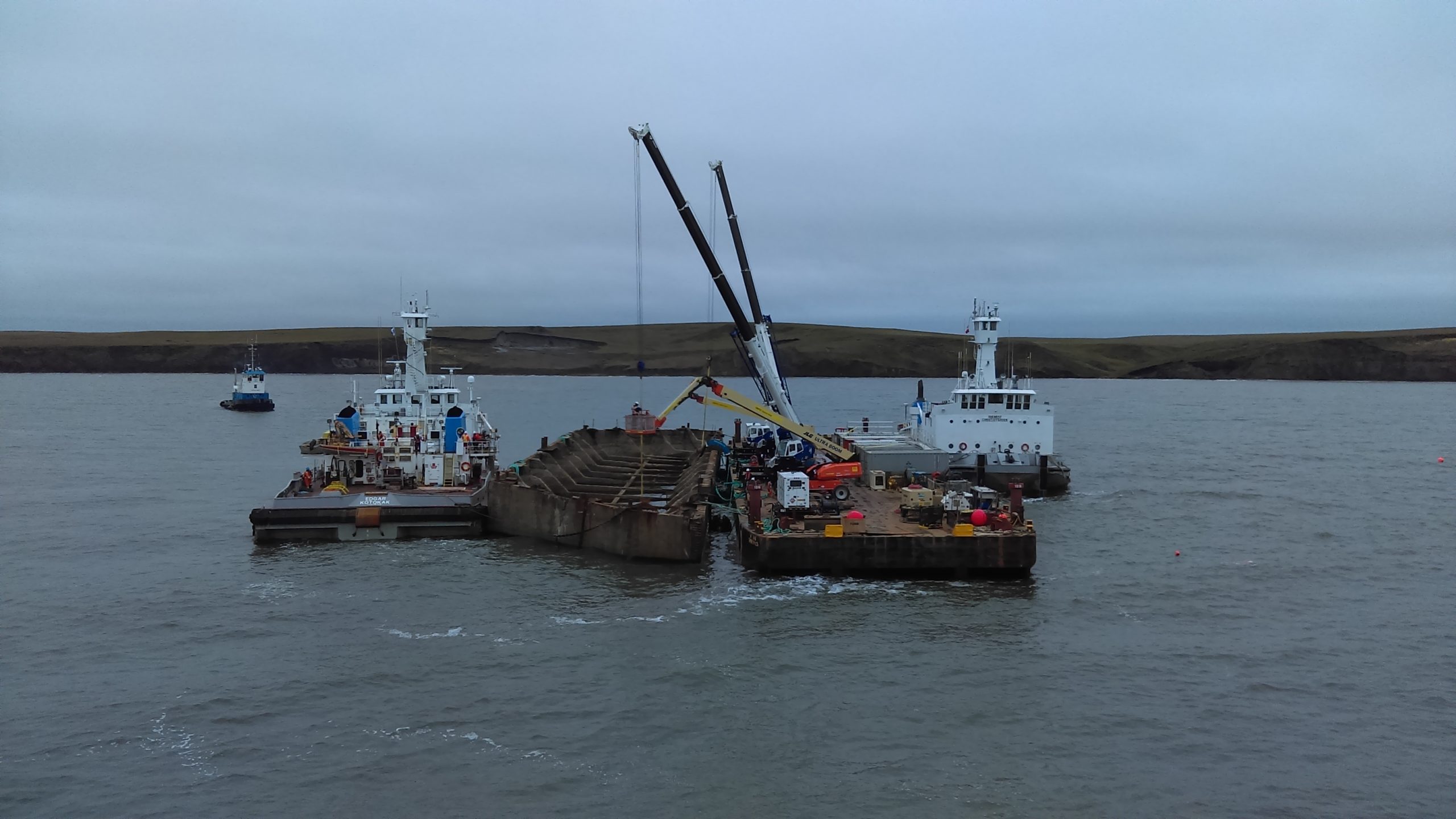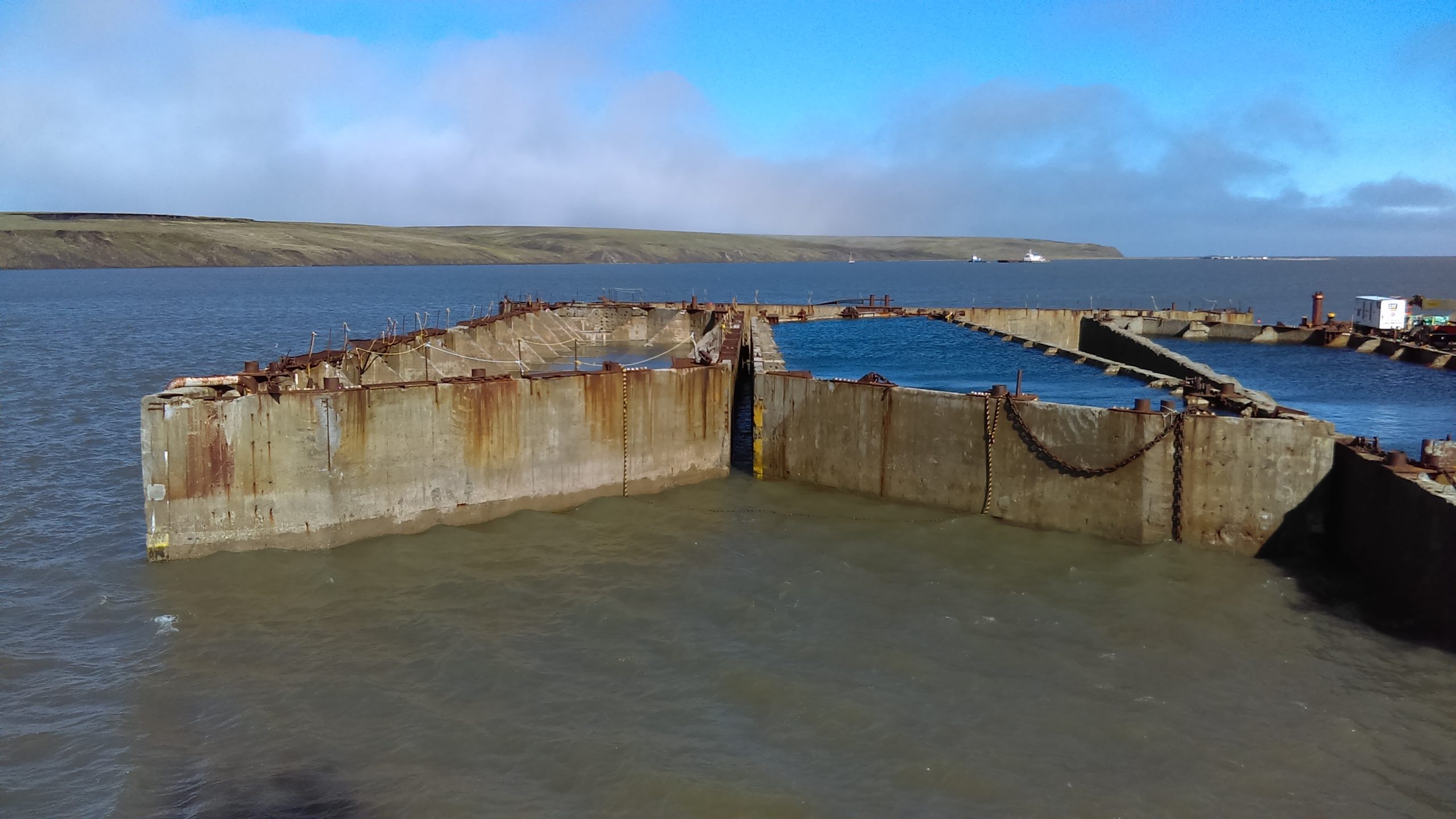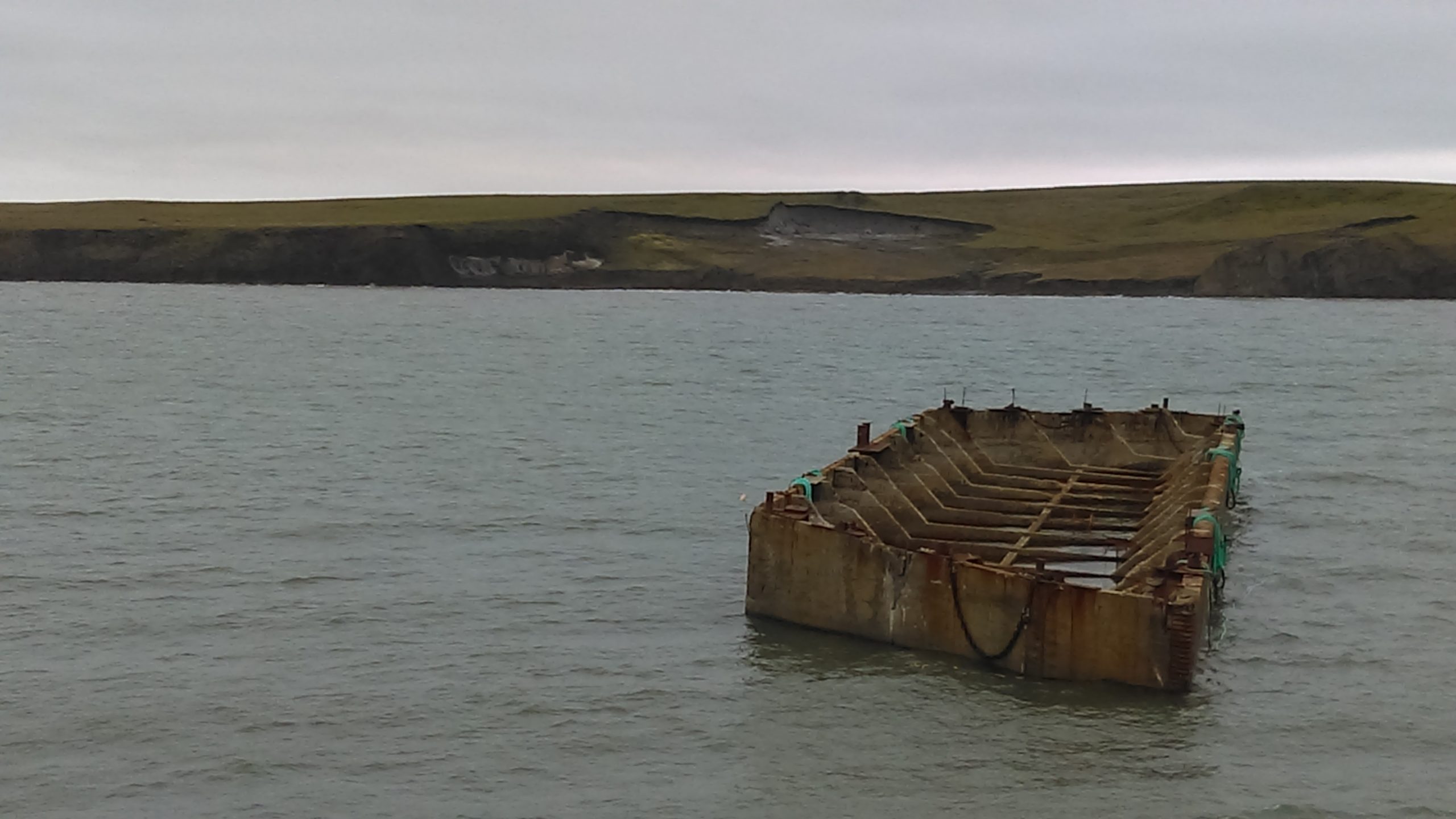Tarsuit Caisson Removal Project
The Tarsuit caissons were constructed to create an artificial island for the installation of an oil exploration rig in Arctic waters. The concrete caissons were floated into a box-shaped formation where they were infilled with dredge sand to stabilize them on the seafloor. After sealing the corners where each caisson met with large steel gates, the interior was filled with dredged sand to form a 7.9 km2 island. This artificial island created a stable platform for the rig to operate throughout the harsh Arctic winter and withstand 12 m storm waves and ice up to 5.6 m thick. After the exploration drilling was completed the rig could be removed, sand ballast pumped out, and the caissons re-floated to be moved to the next location.

Aboriginal Affairs & Northern Development Canada had an agreement with ConocoPhillips Canada for the storage of several concrete tarsuit caissons within the Tarsuit Caisson Federal Lease Area (117-D11-3-7) in the Northwest and Yukon Territories. That agreement expired in 2015, to which Seaforth Geosurveys was contracted by Inukshuk Geomatics Inc. in August of 2017 to conduct a final clearance survey of the area surrounding the caissons, as well as a tow-out route, for the relocation of the caissons as part of the Tarsuit Caissons Removal Project.

Seaforth contributed their equipment and survey operations expertise to collect sidescan sonar and multibeam echosounder data for the identification and removal of any remaining seafloor infrastructure and debris during the caisson re-flotation and salvaging process.

Once the removal was approved, Seaforth also provided positional guidance during the floating and disposal of the caissons, including caisson anchor installation as well as installation and maintenance of a four-point mooring system. To monitor the positions of each caisson in real-time, Seaforth designed and deployed weatherproof positioning modules containing solar panels and both GPS and telemetry radios which were fixed to each caisson for the duration of the project. This allowed for 24/7 monitoring and logging of the floating ciasson’s positions prior to recovery onboard a heavy-lift vessel.
